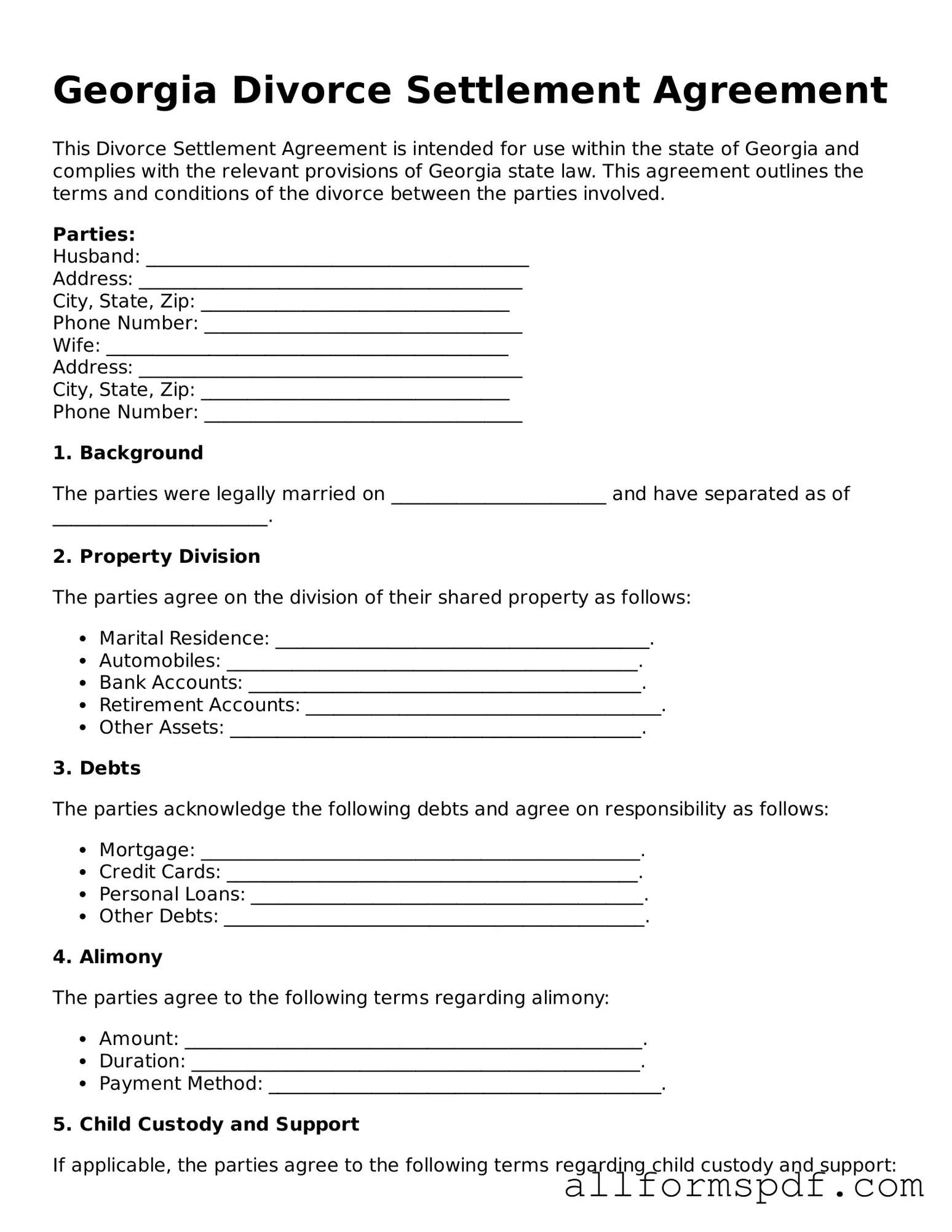Filling out the Georgia Divorce Settlement Agreement form can be a daunting task. Many individuals find themselves making common mistakes that can lead to complications in their divorce proceedings. One frequent error is failing to fully disclose all assets and liabilities. Transparency is crucial in a divorce settlement. When one party hides assets, it can lead to disputes and even legal consequences later on.
Another common mistake is not specifying the details of child custody arrangements. This includes not only physical custody but also legal custody. Parents must clearly outline how decisions regarding the child’s upbringing will be made and how parenting time will be divided. Ambiguity in this section can result in misunderstandings and conflicts down the road.
People often overlook the importance of including a detailed division of debts. It is not enough to simply state who will take responsibility for certain debts. A clear and comprehensive breakdown of each debt, including amounts and payment responsibilities, should be included. This ensures that both parties understand their financial obligations post-divorce.
Another mistake is neglecting to address spousal support, or alimony. Some individuals may assume that spousal support is unnecessary or will not be granted, but failing to include it in the agreement can lead to complications later. It is essential to discuss whether support will be provided, the amount, and the duration.
Additionally, individuals sometimes forget to consider tax implications related to asset division and support payments. For example, the tax treatment of alimony payments has changed over the years, and understanding these implications can affect financial decisions. Consulting with a financial advisor or attorney can help clarify these important issues.
Inaccurate or incomplete information can also be a significant pitfall. It is vital to double-check all entries for accuracy. Errors in names, dates, or financial figures can delay the process or even lead to the rejection of the agreement by the court.
Finally, many people fail to seek legal advice before submitting their Divorce Settlement Agreement. While it may seem tempting to handle the process independently, the guidance of a legal professional can provide invaluable insight. An attorney can help ensure that the agreement is fair, comprehensive, and compliant with Georgia law, ultimately protecting the rights and interests of both parties.
